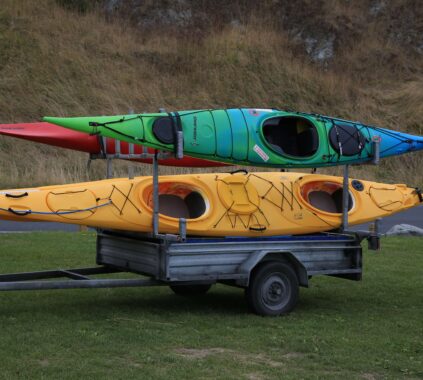
Introduction:
Welcome to our comprehensive guide to inflatable boats. In this article, we will provide all the information you need about inflatable boats, their benefits, types, and maintenance. Whether you’re a boating enthusiast or a novice looking to explore the world of inflatable boats, we’ve got you covered. Let’s dive in!
Why Choose an Inflatable Boat?
Inflatable boats offer many advantages, making them a popular choice among boating enthusiasts. Here are some key reasons why you should consider choosing an inflatable boat:
- Portability and Ease of Transportation:
Inflatable boats are incredibly portable and easy to transport. Unlike traditional boats, which can be heavy and require specialized trailers, inflatable boats can be deflated and folded into a compact size. This means you can easily transport them in the trunk of your car or store them in a small space when not in use.
- Versatility and Performance:
Inflatable boats are designed to perform well in various water conditions. Whether you plan to use it for fishing, leisure cruising, water sports, or even as a tender for a larger vessel, inflatable boats offer excellent stability, maneuverability, and buoyancy. Their lightweight construction allows them to glide smoothly through the water, providing an enjoyable and efficient boating experience.
- Durability and Safety:
Modern inflatable boats are constructed with robust materials such as PVC or Hypalon, which are highly resistant to abrasions, UV rays, and harsh marine environments. This makes them incredibly durable and long-lasting. Additionally, inflatable boats often have multiple air chambers, providing added safety by ensuring the boat remains afloat even if one chamber gets punctured.
- Cost-Effectiveness:
Compared to traditional boats, inflatable boats are generally more affordable, making them an attractive option for those on a budget. Their lower price point doesn’t compromise on quality or performance, making them a cost-effective choice for boating enthusiasts of all levels.
Types of Inflatable Boats:
Inflatable boats come in various types, each designed to cater to specific boating needs. Here are the most common types of inflatable boats:
1. Dinghies
Dinghies are small, lightweight inflatable boats primarily used as tenders for larger vessels. They are easy to launch, retrieve, and transport, making them ideal for ferrying passengers and supplies between shore and a larger boat. Dinghies are often constructed with durable materials and can accommodate multiple passengers.
2. Sport Boats
Sport boats, also known as RIBs (Rigid Inflatable Boats), are versatile inflatable vessels that combine the stability of a rigid hull with the buoyancy of inflatable tubes. These boats are designed for speed, agility, and performance. Sport boats are commonly used for water sports, fishing, and coastal cruising.
3. Kayaks and Canoes
Inflatable kayaks and canoes offer a portable and lightweight alternative to their hardshell counterparts. They are perfect for solo adventurers or small groups exploring calm rivers, lakes, and even mild whitewater. Inflatable kayaks and canoes are easy to transport and store, making them popular among outdoor enthusiasts.
4. Rafts
Inflatable rafts are designed for recreational activities like river rafting, whitewater rafting, and camping trips. They are built to withstand rough water conditions and provide ample space for passengers and gear. Rafts often have self-bailing features and additional attachments for securing equipment.
Maintenance and Care:
Proper maintenance is essential to ensure the longevity and optimal performance of your inflatable boat. Here are some key maintenance tips to keep in mind:
- Cleaning and Storage:
After each use, rinse your inflatable boat with fresh water to remove salt, dirt, and debris. Use a mild detergent and a soft brush to clean stubborn stains. Once clean, allow the boat to dry completely before deflating and storing it in a cool, dry place away from direct sunlight.
- Inflation and Pressure:
Before each use, carefully inspect your inflatable boat for any signs of damage or leaks. Inflate the boat to the manufacturer’s recommended pressure using a high-quality pump or inflation system. Avoid overinflating, as it can strain the seams and valves excessively.
- Protection from UV Rays:
Prolonged exposure to UV rays can degrade the material of your inflatable boat. Cover the boat with a protective UV-resistant cover or store it in a shaded area when not in use. Applying a UV protectant specifically designed for inflatable boats can also help prolong its lifespan.
- Repair and Patching:
In the event of a puncture or damage, it must be addressed promptly to prevent further deterioration. Most inflatable boats come with repair kits that include patches and adhesive. Follow the manufacturer’s instructions to repair the damaged area effectively. For extensive repairs or professional assistance, consult a boat repair specialist.
Conclusion:
Inflatable boats offer a world of possibilities for boating enthusiasts. Their portability, versatility, and durability make them an excellent choice for various water activities. Whether you’re looking for a tender for your yacht, a fishing boat, or an adventurous rafting experience, inflatable boats have you covered. You can enjoy your inflatable boat for years to come by following proper maintenance practices. So, prepare to embark on exciting boating adventures with the ultimate companion – an inflatable boat! Now that you have a comprehensive understanding of inflatable boats, their benefits, and maintenance, you’re well-equipped to decide when choosing an inflatable boat for your needs. Enjoy your boating adventures and explore the waters with confidence.














